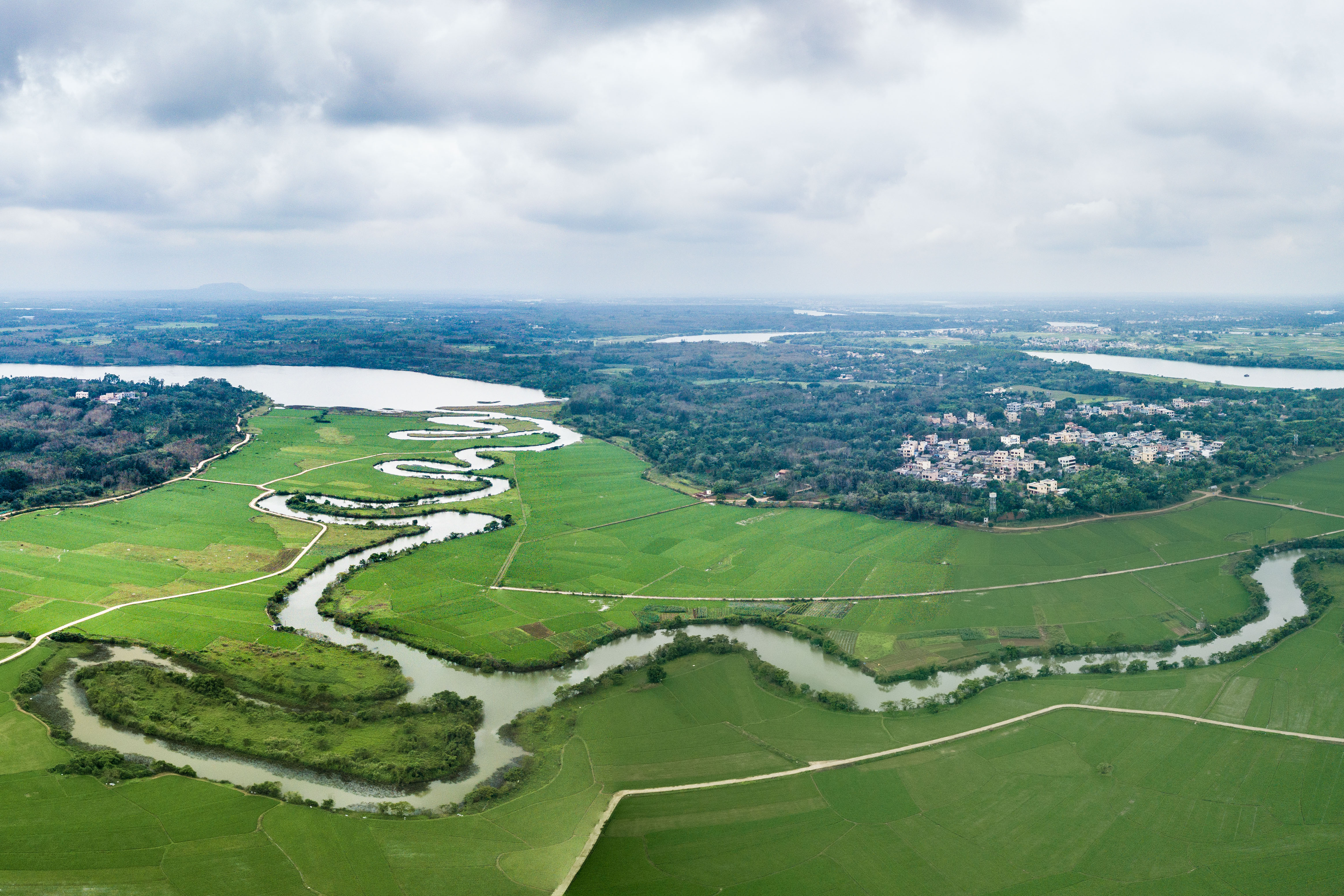Wetland Protection in China Benefits All Life
The Sanshiliuqu River wetland park in Qiongshan district of Haikou city, south China's Hainan province. (PHOTO: XINHUA)
By LU Zijian
This year marks the 30th anniversary of China's joining the Convention on Wetlands of International Importance adopted in 1971 in the Iranian city of Ramsar. After the efforts of three decades, China appointed 64 Wetlands of International Importance, and established 602 wetland natural reserves and more than 1,600 wetland parks.
Why wetlands matter
Regarded as the "kidneys of the Earth," wetlands are areas of marsh, fen, peatland or water, whether natural or artificial, permanent or temporary, with water that is static or flowing, fresh, brackish or salt, including areas of marine water the depth of which at low tide does not exceed six meters, according to the Convention.
Environmental protection is a vital advantage brought by wetlands. Salinization of soil can be eased or prevented by wetlands, especially for land near a lake, a river or the sea. They can also purify the soil by decomposing the pollutants.
Wetlands can adjust the balance of a water system as well. When there is heavy rain or floods, wetlands can store the excessive water, and release the water when severe drought occurs.
In addition, many invaluable wild animals and plants choose wetlands as their habitat. For example, around half of rare birds under first class protection in China live in wetlands.
Offering numerous benefits to both nature and human beings, wetlands need to be protected in an all-round way.
What China has achieved
The improved situation of wetlands along the Yangtze River is a prime example of China's efforts in wetland conservation. The Hualong port at Dongting Lake in Yueyang city, Hunan province was cleared and restored in 2017, restoring the wetland to its former glory with the return of the endangered Yangtze finless porpoises and rare birds.
More than 75,000 mu (1 mu is about 666.7 square meters) of wetlands at Poyang Lake, Jiangxi province was renovated from 2016 to 2020. Now millions of waterfowls have returned to Poyang Lake to spend winter each year, along with more than 95 percent of the world's white crane species.
Apart from restoring nature, the protection projects of wetlands also bring economic benefits. Haizhu wetland in Guangzhou city, south China's Guangdong province is surrounded by 26 Fortune Top 500 enterprises, attracting investment of 86.7 billion RMB in total.
What has been achieved could not have been possible without the previous efforts. From 2016 to 2020, an accumulated investment of 9.87 billion RMB from the central government was made, facilitating over 2,000 wetland protection and restoration projects.
More than seven million mu of degenerated wetlands were repaired.
A law on wetland protection was passed in China in 2021 and will take effect on June 1 this year. However, well before this date there were already regulations on wetland conservation at national and provincial levels.
China is also the world's first country to complete national investigation of wetland resources for three times. Monitoring stations have been built all over the country for wetland investigation, real-time monitoring and information management with the help of high-tech.
China's international involvement
In addition to domestic responsibility, China has also been actively engaging with the international community regarding wetland conservation, since the country joined the Convention in 1992.
The monitoring data of 2021 showed that Wetlands of International Importance in China retained a stable status. The area of those wetlands increased compared with that of 2020, and most of them enjoyed stable or increased water supply. The water quality has become better in general and the biodiversity has been enriched.
With only four percent of the world's wetlands, China managed to meet the production, living, ecological and cultural needs of 20 percent of global population for wetlands, contributing to the protection and reasonable utilization of global wetlands.
From November 11 to 29 this year, the 14th Meeting of the Conference of the Contracting Parties to the Ramsar Convention on Wetlands (COP14) will take place in Wuhan, central China's Hubei province, which is also the first time the country will host the conference.
Together with the international community, China is ready to exert more efforts to strengthen wetland protection, monitoring and management in the future.



